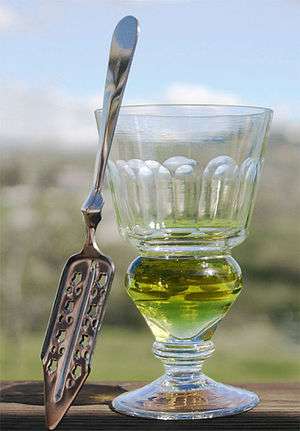Absinthe
Background
- Bitter, green liqueur derived from Wormwood tree extract
- Active ingredient: thujone, which antagonizes GABA-A receptors (now thujone concentrations are thought to be too small to pose any danger to patient)
- Illegal in most countries

Clinical Features
- Euphoria
- Confusion, delirium
- Auditory and visual hallucinations
- Can cause generalized tonic-clonic seizures
Differential Diagnosis
Hallucinogens
- 25C-NBOMe
- Absinthe
- Bath salts
- Ecstasy (MDMA)
- Lysergic acid diethylamide (LSD)
- Marijuana, synthetic cannabinoids
- Mescaline (peyote)
- N,N-Dimethyltryptamine (DMT)
- Phencyclidine (PCP)
- Psilocybin/Mushroom toxicity
- Salvia
Template:Sedative/hypnotic toxicity types
Evaluation
- Typically a clinical diagnosis, based on history
- Evaluate for other causes of symptoms and co-ingestions
Management
- Supportive care
Disposition
- Discharge when clinically sober
See Also
External Links
References
This article is issued from
Wikem.
The text is licensed under Creative
Commons - Attribution - Sharealike.
Additional terms may apply for the media files.